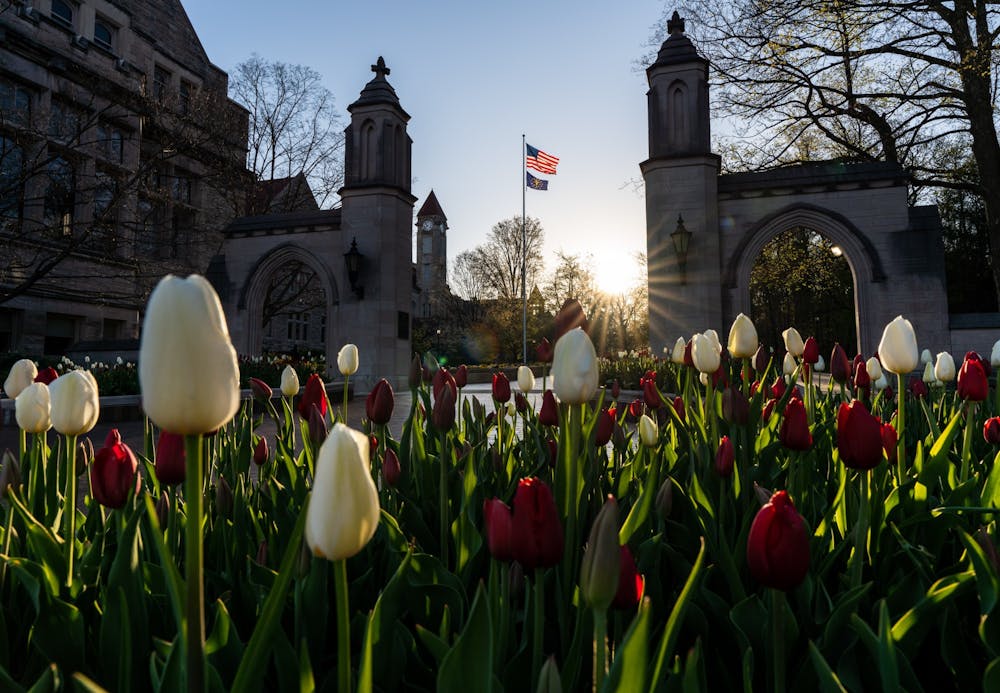When IU students began their return to campus in August, they were thrust into unfamiliar territory, having to start a new year of college during a pandemic.
COVID-19 has forced state and local officials to implement health and safety requirements, and colleges have had to follow suit. Masks became mandatory almost everywhere on campus, gatherings were limited, and regulations were put upon nearly every aspect of life at IU in an effort to slow the spread of COVID-19.
The threat of getting sent home loomed over the excitement of the new year. At its core, IU’s message was simple: students’ actions would determine their fate.
By now, most students have reached their first month being back on campus, a milestone that students weren’t sure they’d reach; some schools across the nation, such as UNC Chapel Hill, sent students home after one week due to a spike in Covid-19 cases. At IU, however, positivity rates in residence halls are steady around just 2.5% according to the testing dashboard.
While the goal to getting students back on campus has been fulfilled, its affect expands beyond the grounds of IU. Outside the Sample Gates is a community of are around 40,000 who are facing new challenges that come with living in a college town during a pandemic.
Mary Catherine Carmichael, Bloomington's director of public engagement, said IU students have a major positive impact on the larger Bloomington community.
“Of course we’re happy and we want the students back here," Carmichael said. Bloomington wouldn’t be Bloomington without IU and the students that return to us every year,” .
Economic prosperity is also a major benefit to having students on campus, especially in a time when some people are hesitant to leave home and many businesses have even been forced to shut down.
Peter Dorfman, president of Bloomington's Near West Side Neighborhood Association, said local businesses rely on student consumers.
“A large volume of business that’s done in Bloomington every day is done to cater to the student market. All the downtown businesses basically have to cater to students, make up a very large portion of their customer base,” Dorfman said.
Initial reactions to IU’s decision to allow students oncampus were varied. Phil Stafford, chairperson of the Bloomington's Commission on Aging, said he felt a little fear and trepidation, but that it eased up as policies and protocols were developed. He said he is concerned about the partying, but is hopeful that students will look out for the health and safety of themselves and others.
The mask mandate states that Bloomington residents must wear masks in all public places and outside when social distancing isn’t possible. IU’s policy is largely the same. Carmichael and Stafford both said that, for the most part, they haven’t seen students without masks.
However, not all Bloomington residents were as ready to welcome students back in the middle of the pandemic. With the city being home to many retirement communities, there’s a demographic of older citizens who are at high risk of getting severely sick or even dying from COVID-19; the Centers for Disease Control and Prevention reported that eight out of every 10 COVID-19 deaths occur in people aged 65 and older.
Despite praising students commitment to health and safety requirements, Stafford said there’s a side of the conversation around the effects of the virus and quarantine — particularly on mental health — that too often goes unconsidered.
“Social isolation is a dangerous phenomenon in older people, associated with poor health, associated with depression and suicide and mental health problems," Stafford said. "What makes me additionally angry about that situation is that the public discourse around that situation does not really acknowledge that impact on older people,” Stafford said.
College provides an opportunity for many students to enjoy newfound freedom, even if it's limited. But for others, such as Laura Ginger, a resident of blue ridge neighborhood and retired IU professor, their return means rarely leaving the house, afraid of catching the virus among the abundance of students. Ginger and fellow resident Jude Smith answered questions from an IDS reporter on Nextdoor.
“I am going to move back to my extreme ‘hunkering down’ status from March due to the arrival of IU students,” Ginger said.
Her husband, also a retired IU professor, is immunocompromised due to cancer. That means if he contracted the virus, he likely wouldn’t survive.
“Student behavior can have a serious and even deadly effect on us,” Ginger said. “We very much resent IU bringing students back in person this fall.”
Smith said she also disagrees with the decision.
“I understand the economics of having the students back, but overall I think they are putting us all at greater risk,” Smith said.
She said she’s driven through campus recently and seen most people unmasked.
“They just don’t seem to get it,” she said.
While many IU students may spend a majority of their time on campus, that doesn’t mean they don’t come into contact with off-campus citizens who might be at high risk.
“Everybody goes to Kroger and the grocery store," Carmichael said. "Everybody probably goes to the mall at one time or another, or Target, so we are crossing paths. We are one community, even though a lot of us spend time on campus and a lot of us spend time off campus.”
Empathy can go a long way when it comes to shielding compromised people from disease, Carmichael said. She said she recognizes it's disappointing to have the typical college experience uprooted, student should work together toward the greater good.
“Nobody wants to live as a hermit, everyone wants people to interact with and share our lives with," Carmichael said. "But if we can really limit that number and make a mutual commitment to limit their exposure to other people, we think that's a happy medium for folks."




